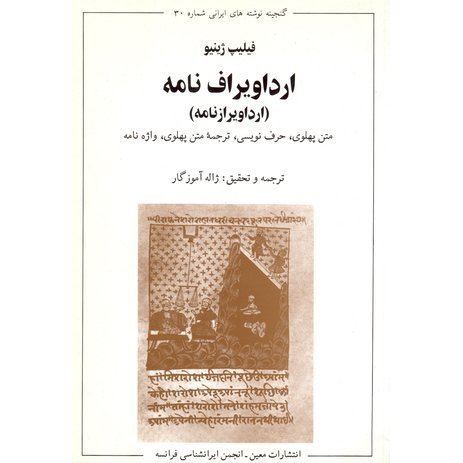 | ||
Similar Vendidad, Avesta, Nozhat al‑Majales | ||
Book of arda viraf
The Book of Arda Viraf is a Zoroastrian religious text of Sassanid era in Middle Persian language that contains about 8,800 words. It describes the dream-journey of a devout Zoroastrian (the 'Viraf' of the story) through the next world. The text assumed its definitive form in the 9th-10th centuries C.E., after a long series of emendations.
Contents
- Book of arda viraf
- Judaism influenced zoroastrianism part 4 dating the vendidad and the book of arda viraf
- Title
- Textual History
- Plot summary
- Quotes from the Text
- References
Judaism influenced zoroastrianism part 4 dating the vendidad and the book of arda viraf
Title
The title of the book is read as either Arda Viraf Namag or Arda Viraz Namag. Due to the ambiguity inherent to Pahlavi script, 'Viraf' (the name of the protagonist) may also be transliterated as 'Wiraf', 'Wiraz' or 'Viraz'. The 'Arda' of the name (cf. Asha; cognate with Skt. r̥ta) is an epithet of Viraf and is approximately translatable as "truthful" or "righteous." "Viraz" is probably akin to Proto-Indo-European *wiHro--, "man" see Skt. vīra. Nāmag means "book".
Textual History
The date of the book is not known, but in The Sacred Books and Early Literature of the East, Prof. Charles Horne assumes that it was composed fairly late in the ancient history of Zoroastrianism, probably from the period of the Sassanian empire, when Zoroastrianism experienced a state-sponsored revival. The fact that the "evil" Alexander the Great is referred to as a Roman suggests this period, in which the rivalry between the two empires was intense.
Plot summary
Arda Viraf is chosen for his piety to undertake a journey to the next world in order to prove the truth of Zoroastrian beliefs, after a period when the land of Iran had been troubled by the presence of confused and alien religions. He drinks wine and a hallucinogen, after which his soul travels to the next world where it is greeted by a beautiful woman named Den who represents his faith and virtue. Crossing the Chinvat bridge, he is then conducted by "Srosh, the pious and Adar, the angel" through the "star track", "moon track" and "sun track" – places outside of heaven reserved for the virtuous who have nevertheless failed to conform to Zoroastrian rules. In heaven, Viraf meets Ahura Mazda who shows him the souls of the blessed (ahlav). Each person is described living an idealised version of the life he or she lived on earth, as a warrior, agriculturalist, shepherd or other profession. With his guides he then descends into hell to be shown the sufferings of the wicked. Having completed his visionary journey Viraf is told by Ahura Mazda that the Zoroastrian faith is the only proper and true way of life and that it should be preserved in both prosperity and adversity.
